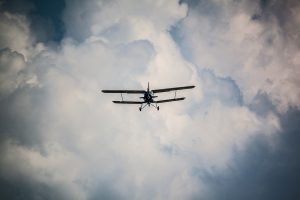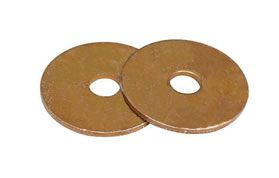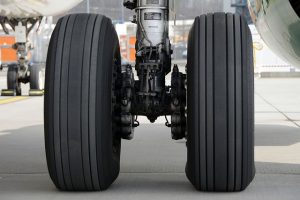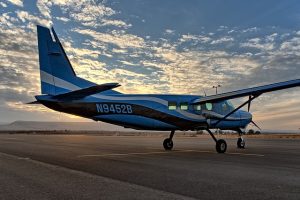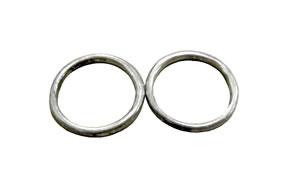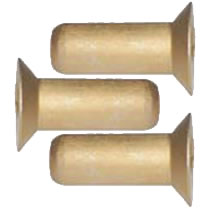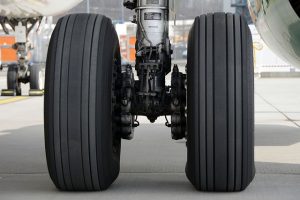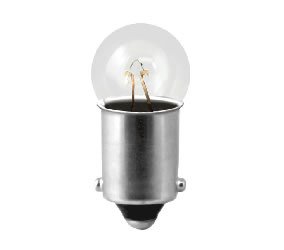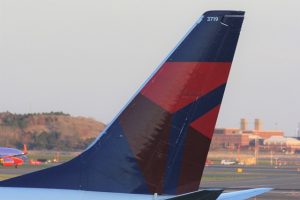
You can’t believe everything you read and hear about tail fins. Tail fins, of course, are part of aircraft tail assemblies. Most airplanes have a single tail fin on their tail assembly or empennage. Unfortunately, tail fins are shrouded in misinformation. Below are five common myths about tail fins that you shouldn’t believe.
#1) Different From Vertical Stabilizers
Many people assume that tail fins are different from vertical stabilizers, but this isn’t the case. They are the same part. The terms “tail fin” and “vertical stabilizer” are used interchangeably when referring to the vertical strip on an airplane’s tail assembly.
#2) Adjustable
Another common myth about tail fins is that they are adjustable. Pilots can, in fact, adjust horizontal stabilizers, but they can’t adjust vertical stabilizers. Vertical stabilizers or tail fins are considered static parts. Like other static parts, they are fixed. There’s no way for pilots to turn, rotate or otherwise adjust an airplane’s tail fin.
#3) Nonfunction
They may be fixed, but tail fins still have a purpose. They are designed to minimize yawing, for instance. Yawing involves lateral movement. During flight, airplanes may move sideways. Strong winds can amplify this sideways movement, resulting in greater fuel consumption. With a tail fin, however, airplanes will experience less yawing.
#4) No Mounted Features
Tail fins aren’t plain. While available in many different styles, most of them have mounted features, such as a rudder. Rudders are typically attached to the back of tail fins. An airplane’s tail assembly consists of a vertical tail fin on the front, followed by a rudder on the back.
Rudders are essentially hinged to tail fins. They are mounted to the back of an airplane’s tail fin, and pilots can adjust them from the cockpit. By adjusting them, pilots can minimize yaw and stabilize the airplane. In addition to a rudder, some airplanes have a trim tab mounted to the back of their tail fin. Trim tabs work in conjunction with rudders to provide pilots with better control.
#5) Size Doesn’t Matter
Tail fins are also available in different sizes. While they all protect against excessive side-to-side movement or yawing, some tail fins are more effective than others. Small airplanes typically feature a longer tail fin relative to their body size.
In Conclusion
The tail fin is an important part of an airplane’s tail assembly. It’s the main fixed structure that supports other mounted features, including rudders and trim tabs.
- SEO Powered Content & PR Distribution. Get Amplified Today.
- PlatoData.Network Vertical Generative Ai. Empower Yourself. Access Here.
- PlatoAiStream. Web3 Intelligence. Knowledge Amplified. Access Here.
- PlatoESG. Carbon, CleanTech, Energy, Environment, Solar, Waste Management. Access Here.
- PlatoHealth. Biotech and Clinical Trials Intelligence. Access Here.
- Source: https://monroeaerospace.com/blog/5-common-myths-about-tail-fins/
- :is
- 200
- 300
- a
- About
- addition
- adjust
- adjustable
- adjusting
- against
- aircraft
- Airplane
- Airplanes
- All
- also
- amplify
- an
- and
- ARE
- AS
- Assembly
- assume
- attached
- available
- back
- BE
- believe
- below
- Better
- body
- but
- by
- CAN
- case
- Cockpit
- Common
- conjunction
- considered
- consists
- consumption
- control
- course
- designed
- different
- Doesn’t
- during
- Effective
- essentially
- everything
- experience
- fact
- Feature
- Features
- fin
- FINS
- five
- fixed
- flight
- followed
- For
- from
- front
- Fuel
- greater
- Have
- hear
- High
- Horizontal
- However
- HTTPS
- important
- in
- Including
- instance
- involves
- jpg
- less
- like
- longer
- Main
- many
- max-width
- May..
- minimize
- Misinformation
- more
- most
- move
- movement
- no
- of
- on
- or
- Other
- Others
- otherwise
- part
- parts
- People
- Pilots
- Plain
- plato
- Plato Data Intelligence
- PlatoData
- protect
- provide
- purpose
- Read
- relative
- resulting
- same
- shrouded
- sideways
- single
- Size
- sizes
- small
- some
- stabilize
- Still
- Strip
- strong
- structure
- such
- Supports
- terms
- than
- that
- The
- their
- Them
- they
- this
- to
- TURN
- typically
- unfortunately
- used
- vertical
- Way..
- when
- while
- will
- winds
- with
- Work
- you
- zephyrnet

